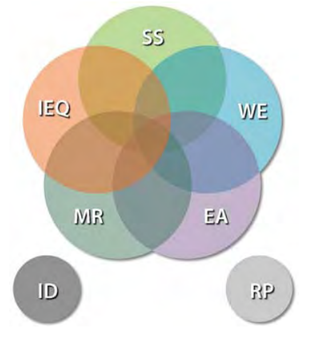The Sustainable Parts of Green Design
USGBC defines Green Building as the integrated effort of transforming the way built environments are designed, constructed and operated, and encourages involvement from early planning to beyond the end of a structure's life cycle. Incorporating a holistic, or whole building, approach to the design and construction, green building produces high performance by focusing on sustainable categories as defined by LEED.
With an integrated and holistic approach, the interaction, or synergies and trade-offs, between construction strategies in managed to maximize performance results. LEED channels green design through five sustainable categories as determined by the environmental issues being addressed.
With an integrated and holistic approach, the interaction, or synergies and trade-offs, between construction strategies in managed to maximize performance results. LEED channels green design through five sustainable categories as determined by the environmental issues being addressed.
- Sustainable sites (SS)
- Water efficiency (WE)
- Energy and atmosphere (EA)
- Materials and resources (MR)
- Indoor environment quality (IEQ)
- Innovation in design (ID)
- Regional priority (RP)


